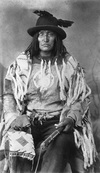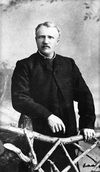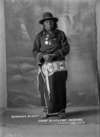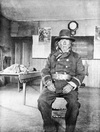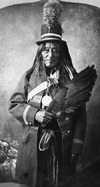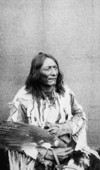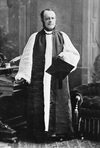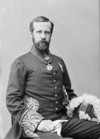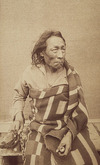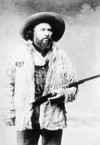CHULA (Little Chief, Stamixo’tokan, Bull Head), Sarcee warrior and chief; b. c. 1833, likely in what is now central
the word that changes should be made at Peace Hills. In May 1890 Lucas was informed that he was being transferred to the Sarcee agency just outside Calgary. It was a bitter blow – it would
paint: Blackfoot and Sarcee painted buffalo robes in the Royal Ontario Museum (Toronto, 1993). Can., Dept. of Indian Affairs, Annual report (Ottawa), 1887: 100; 1898: 126. J. [S
has remained unhappily so to this day.” In September 1877 Indians from much of what is now southern Alberta – Blackfoot, Blood, Peigan, Sarcee, and Stoney – met at Blackfoot Crossing to
had been made at all.” He believed that the sham battle staged after the signing was only half in jest. During the negotiations Crowfoot had suggested that the Blackfoot, the Blood, and the Sarcee
on a raid against the Cree. The expedition was organized in revenge for a Cree attack in which a Sarcee chief had been killed. The Cree succeeded in shooting Crop Eared Wolf in the leg, and he walked
settlers of western Canada (London, 1892). C. H. W. G. Stocken, Among the Blackfoot and Sarcee (Calgary, 1976).
Company. In late November he enlisted as a private in the 211th Infantry Battalion at Calgary. The battalion had entered Camp Sarcee for training in July, but a shortage of recruits necessitated a last
explorers, and the first known vocabularies of the Fall (Gros Ventre) and Sarcee Indians. In actual fact, these short vocabularies, together with much else of Graham’s rather sketchy information about the
was too old for overseas duty in World War I, but in 1916–18, with the rank of major, he commanded Vermilion’s militia company and served as an instructor in the infantry school at Camp Sarcee in
included the Blood, Piegan, and Blackfoot tribes and their allies the Sarcees and the Gros Ventres – as well as Crowfoot’s impressive role as diplomat and politician, often caused whites to place him in
the Kootenay. He traded among the Peigans, Salish, and Sarcees that year and the next.
In 1813 the NWC dispatched Henry and Alexander Stewart (Stuart
Irvine were both remembered with respect. His first portrait was of Crowfoot’s favourite wife, Sisoyaki (Cutting Woman), now an old woman. He visited Blackfoot, Sarcee, Blood, and Peigan reserves in 1907
Crees, and had initiated it among the Blackfeet, Bloods, Piegans, and Sarcees of southern Alberta. McLean attributed to the work of the missionaries the comparative quietness, during the rising, among the
. M. Blunt. Russell did a few paintings with supplies given him by Blunt and took the opportunity to acquaint himself with the native peoples of the area – Stoney, Sarcee, Blackfoot, Blood, and
Payipwat* and Blood chief Red Crow [Mékaisto*]. Aberdeen was made an honorary Blackfoot chief, and the viceregal couple visited the Sarcee Indian
consultations on the problem of the Sioux, before returning to Fort Macleod.
In September 1877 some 5,000 Blackfeet, Bloods, Peigans, Sarcees, and Stoneys
destroyed. In March 1879 Father Jean-Marie-Joseph Lestanc, who was wintering with the Métis at Red Deer Forks, reported: “All the tribes – that is the Sioux, Blackfoot, Bloods, Sarcees, Assiniboines
-Baptiste Dumont and a Sarcee woman called Josette “Sarcisse.” Josette had begun living with a man named Bruneau in the 1780s and had one child with him. Following the custom of the fur trade, Bruneau turned


